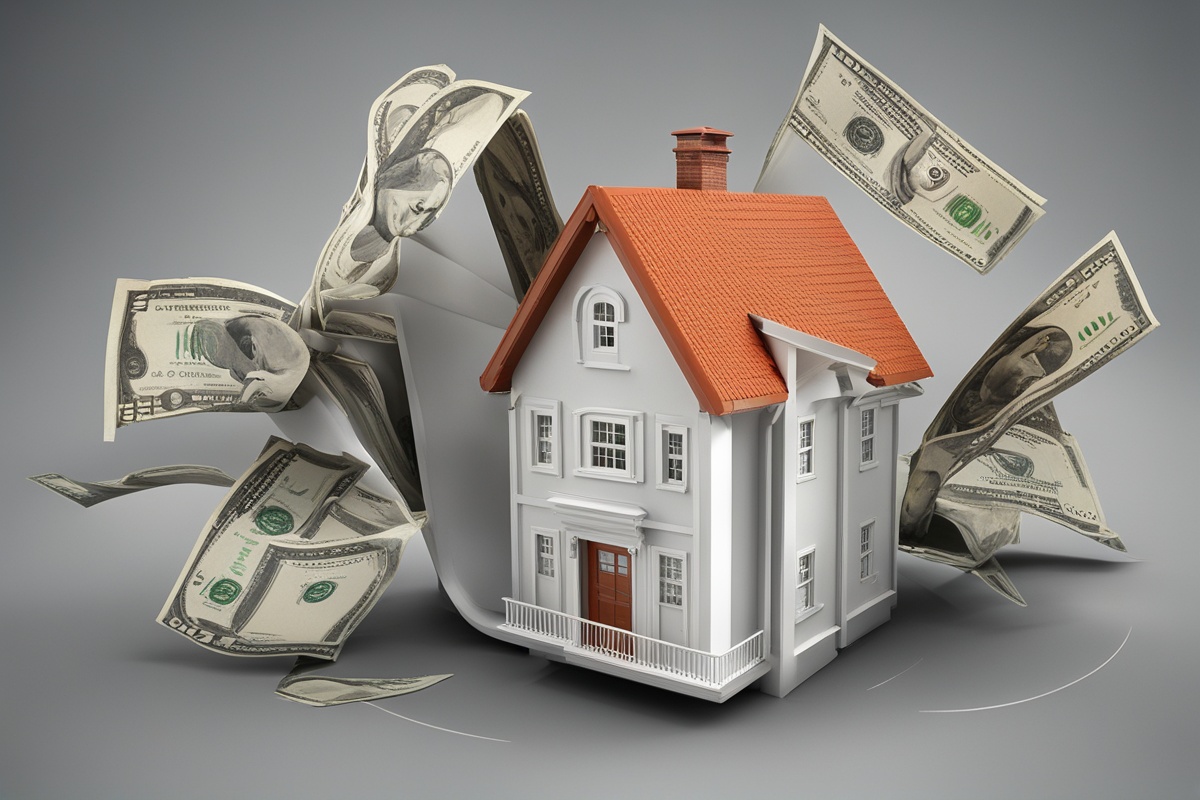Refinancing a mortgage can feel like navigating a maze—sometimes you’re not even sure if there’s a way out. But when done right, it’s a powerful tool to save money, reduce stress, or even tap into your home’s equity for life’s big moments. If you’ve been wondering about smart ways to refinance mortgages, you’re in the right place. I’ve spent years diving into the ins and outs of home financing, helping friends, family, and clients make sense of their options, and I’m here to share actionable insights that go beyond the surface-level advice you’ll find elsewhere.
Why Refinancing Might Be Your Next Smart Move
Let’s start with the big question: why bother refinancing at all? Imagine you’re stuck with a high-interest mortgage from a few years back—maybe you signed on when rates were sky-high, or your credit wasn’t in the best shape. Fast forward to today, and interest rates might be lower, or your credit score has improved. Refinancing could slash your monthly payments or shorten your loan term, saving you thousands over time. According to the Federal Reserve, even a 1% drop in interest rates can make a significant dent in your long-term costs. Isn’t that worth a second look?
But it’s not just about rates. Maybe you want to switch from an adjustable-rate mortgage (ARM) to a fixed-rate one for peace of mind, or you’re looking to cash out some equity for a home renovation. I once helped a neighbor refinance to fund a kitchen remodel, and not only did they get a lower rate, but their home’s value jumped after the upgrade. It was a win-win. The key is knowing your “why” before diving in—without a clear goal, you might end up spinning your wheels.
Smart Ways to Refinance Mortgages: Timing Is Everything
One of the smartest ways to refinance mortgages is to strike when the iron’s hot. Timing can make or break your deal. Keep an eye on market trends—interest rates fluctuate based on economic conditions, and a dip could be your golden ticket. For instance, in 2020 and 2021, rates hit historic lows, and homeowners who refinanced during that window saved big. Tools like the Mortgage Rate Tracker on our site can help you stay updated on current trends.
But timing isn’t just about rates. Have you checked your credit score lately? Lenders look at this closely, and a higher score can unlock better terms. I remember a client who waited six months to refinance, using that time to pay down debt and boost their score from 650 to 720. The result? They qualified for a rate nearly half a percent lower than they would’ve gotten earlier. That’s real money saved. So, if your credit needs work, don’t rush—build it up first.
Choosing the Right Refinance Option for You
Not all refinancing options are created equal, and picking the right one is another of the smart ways to refinance mortgages. Are you leaning toward a rate-and-term refinance to lower your interest or adjust your loan length? Or does a cash-out refinance sound more appealing, letting you pull equity for big expenses like debt consolidation or a kid’s college tuition? Each comes with pros and cons. A cash-out refinance, for example, increases your loan balance, which could mean higher payments or more interest over time. It’s a trade-off you’ll need to weigh.
Then there’s the question of loan type. Switching from an ARM to a fixed-rate mortgage can shield you from future rate hikes, especially if you plan to stay in your home for the long haul. On the flip side, if you’re planning to move soon, an ARM might still make sense with its lower initial rates. I always tell people to map out their 5- or 10-year plan before deciding—where do you see yourself, and what risks can you stomach? For more on loan types, check out our detailed guide on Fixed vs. Adjustable-Rate Mortgages.
Crunch the Numbers: Avoid Hidden Costs
Here’s where a lot of folks trip up—they focus on the shiny new interest rate and forget about the fine print. Refinancing isn’t free. Closing costs, appraisal fees, and origination fees can add up to 2-5% of your loan amount. That’s thousands of dollars out of pocket. One of the smartest ways to refinance mortgages is to calculate your break-even point: how long will it take for your monthly savings to offset those upfront costs? If you’re planning to move in two years but your break-even is five years out, refinancing might not be worth it.
I’ll never forget a friend who refinanced without doing the math. They saved $100 a month on their payment but paid $4,000 in fees. It would’ve taken over three years to break even, but they sold the house after just 18 months. Ouch. Use online calculators or chat with a lender to run these numbers. And don’t shy away from negotiating fees—some lenders will waive or reduce them if you ask. Curious about other cost-saving tips? Our post on Reducing Mortgage Closing Costs has you covered.
Work with the Right Lender or Broker
Finding a trustworthy lender or mortgage broker is like finding a good mechanic—you want someone who knows their stuff and won’t steer you wrong. Shopping around for quotes is one of the smartest ways to refinance mortgages because rates and terms can vary wildly between lenders. Don’t just settle for the first offer that lands in your inbox. Get at least three quotes, and pay attention to the Annual Percentage Rate (APR), which includes fees and gives you the true cost of the loan.
Personal tip: ask for recommendations from friends or family who’ve refinanced recently. A few years ago, I connected with a broker through a coworker’s referral, and their transparency about fees and timelines made the process a breeze. Also, check reviews on platforms like the Better Business Bureau (BBB) to vet potential lenders. You’re not just signing up for a loan—you’re entering a long-term relationship, so choose wisely.
Prepare for the Long Game: Documentation and Patience
Refinancing isn’t a quick fix; it’s a marathon, not a sprint. Lenders will want a mountain of paperwork—think pay stubs, tax returns, bank statements, and proof of homeowners insurance. One of the smart ways to refinance mortgages is to get your ducks in a row before you apply. Missing documents can delay the process or even tank your application. I’ve seen clients scramble at the last minute to dig up old W-2s, turning a 30-day process into a 60-day headache. Create a checklist and triple-check it.
Patience is key, too. Appraisals, underwriting, and title searches take time, often 30-45 days or more. If rates are climbing, lock in your rate early to avoid surprises. And if something feels off during the process, don’t hesitate to ask questions. You’re not just a number to a lender—you’re a homeowner deserving of clarity.
Final Thoughts: Refinance with Purpose
At the end of the day, the smartest ways to refinance mortgages boil down to purpose and preparation. Know why you’re refinancing, whether it’s to save money, access equity, or stabilize your payments. Do the math to ensure it makes financial sense, and don’t skimp on research when choosing a lender. Think of it like planning a cross-country road trip—you wouldn’t set out without a map, a full tank of gas, and a destination in mind, right? Refinancing is no different.
I’ve seen firsthand how a well-timed, well-planned refinance can transform someone’s financial outlook. But I’ve also seen rushed decisions lead to regret. Take your time, seek expert advice, and make the choice that’s right for you. If you’re still on the fence, reach out to a financial advisor or mortgage professional to talk through your unique situation. Your home is likely your biggest investment—treat it with the care it deserves.
References
- Federal Reserve – Mortgage Rates Data
- Consumer Financial Protection Bureau – Mortgage Refinancing Guide
- Freddie Mac – Refinance Trends and Insights
- Better Business Bureau – Lender Reviews and Ratings
This content is for informational purposes only and not a substitute for professional advice.





